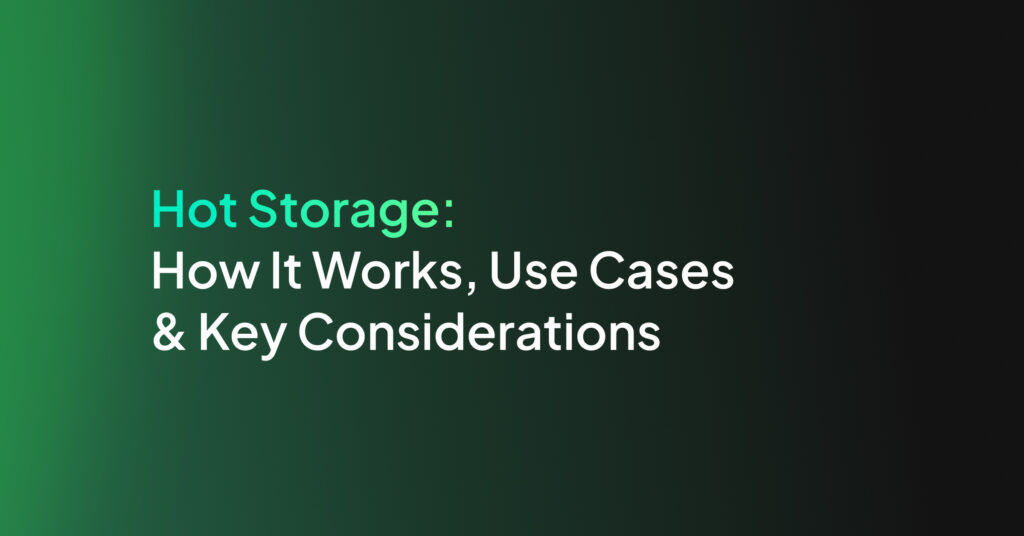Distributed Tracing: Concepts, Pros/Cons & Best Practices [2025 Guide]

The Evolution of Tracing: From Monolithic to Microservices Architectures
Tracing mechanisms have evolved in tandem with IT architectures, moving from monoliths to microservices. In traditional monolithic architectures, tracing focused on a single, unified application where internal call paths were relatively straightforward. However, with the shift to microservices architectures, the communication between services became a complex web, each service operating in isolation.
Microservices architectures require tracing techniques that can account for distributed operations. Tracing solutions evolved by adopting context propagation methods and using visualization tools to manage complexity. This enables monitoring that aligns with the dynamic and ephemeral nature of microservices.
Learn more in our detailed guide to distributed tracing in microservices
Core Concepts of Distributed Tracing
Organizations and development teams should be familiar with the following concepts when monitoring distributed environments.
Traces, Spans, and Context Propagation
Traces are end-to-end paths that detail how requests move through a distributed system. Each trace is composed of spans, which represent individual units of work carried out by services. Together, traces and spans outline the exact path and the sequence of operations involved.
Context propagation is essential in maintaining the relationship between these spans across distributed services. It ensures that context information, like trace IDs, are consistently and accurately passed along between different components and services to create a snapshot of the request.
Each span contains metadata such as operation name, start, and end timestamps, providing insights into the performance of each service. Proper context propagation leverages headers or metadata in protocol communications, enabling trace linking between disparate systems.
Instrumentation Techniques
Instrumentation is the process of adding tracing logic into your applications and services. It allows data to be collected on how requests are processed by different components. There are two primary techniques: manual instrumentation and automatic instrumentation.
Manual instrumentation involves adding specific trace code to individual components, providing control over the traces. Automatic instrumentation uses libraries and tools that wrap existing code to provide tracing capability, minimizing developer effort and reducing chances of missing important spans.
Effective instrumentation captures essential data without burdening the system. Choosing the right technique depends on the application’s architecture and requirements. While manual instrumentation offers control, automatic techniques support rapid deployment and consistency across diverse environments.
Trace Data Collection and Storage
Trace data collection involves capturing span data emitted by instruments as requests traverse various services. This data is aggregated using centralized services that process and format the data for analysis, often employing agents or collectors spread throughout the system. Trace storage is crucial, as it maintains the history of traces for reference and inspection.
Effective storage solutions must accommodate high throughput and minimal latency to sustain real-time analysis. They should also ensure scalability to handle peak loads and surges in service usage. Common storage backends for trace data include distributed databases and cloud-native solutions that offer flexible storage capabilities.
How Distributed Tracing Works
Distributed tracing involves instrumenting each service in a system to capture trace data as requests move through the architecture. The process typically involves the following key steps:
- Request identification: When a request enters the system, it is assigned a unique trace ID. This ID accompanies the request as it passes through various services, acting as a unique identifier for the trace.
- Span creation: As the request progresses, each service or operation creates a span, which contains metadata about the specific action being performed. This includes details such as the service name, operation name, start and end timestamps, and any associated errors or tags.
- Context propagation: To maintain continuity across services, context information, including the trace ID and parent span ID, is passed alongside the request. This propagation is typically managed using headers in communication protocols like http or grpc.
- Data collection: Spans generated by each service are captured by tracing instrumentation and sent to a centralized collector or agent. The collector aggregates span data, organizing it into complete traces that represent the lifecycle of a request.
- Trace analysis and visualization: Once collected, trace data is stored in a trace backend system where it can be analyzed and visualized. Tracing tools use this data to create trace graphs and dashboards, highlighting dependencies, bottlenecks, latency, and errors.
Pros and Cons of Distributed Tracing
Distributed tracing offers the following pros for monitoring, debugging, and optimizing distributed systems:
- Improved system observability: By visualizing the end-to-end flow of requests, distributed tracing provides an understanding of how services interact. This observability helps engineers monitor system health and understand dependencies between services.
- Efficient bottleneck identification: Distributed tracing highlights latency in different services or operations, making it easier to identify performance bottlenecks. By pinpointing the slowest components, teams can focus their optimization efforts where they are most impactful.
- Faster issue diagnosis: When errors or failures occur, tracing allows engineers to trace the exact path of a problematic request, identifying the service or operation responsible. This accelerates the debugging process and reduces mean time to resolution (MTTR).
- Enhanced user experience: By reducing latency and minimizing errors through trace-driven optimizations, distributed tracing ensures smoother and more reliable user interactions.
- Support for scaling and complexity management: As systems grow in complexity with microservices and distributed architectures, tracing helps manage and understand the intricate web of interactions. It scales with dynamic systems, offering clarity even in highly heterogeneous environments.
- Proactive performance optimization: Beyond reacting to issues, distributed tracing enables proactive system improvements by revealing trends and areas with suboptimal performance.
However, distributed tracing also has some drawbacks:
- Instrumentation overhead: Adding tracing into application services can introduce additional processing steps, which might impact performance if not managed appropriately. This overhead comes from logging additional data and managing trace context propagation, which requires careful balancing to ensure visibility without overwhelming systems.
- Sampling strategies and data loss: Sampling strategies dictate which traces to collect, as gathering traces for every transaction can lead to significant data storage needs and operational costs. Setting sampling rates involves a trade-off between data availability and system performance, potentially leading to data loss if critical traces are not captured.
- Compatibility across diverse technologies: Different services may use distinct programming languages, libraries, and communication protocols, requiring diverse tracing solutions. Maintaining interoperability between these systems can be challenging, requiring universal standards and frameworks for integration.
Best Practices for Effective Distributed Tracing
When implementing distributed tracing, organizations should consider the following practices to ensure optimal visibility.
Standardize Trace Context Across Services
Standardizing trace context across all services ensures consistency in trace data, promoting accurate trace reconstruction and analysis. By adopting universal standards for trace IDs and propagation, such as those provided by OpenTelemetry, teams can maintain coherent trace datasets even as services evolve or scale.
This standardization simplifies the instrumentation process and ensures interaction between components, especially when dealing with third-party integrations or diverse technology stacks. Careful implementation of context standards helps in achieving meaningful, actionable insights from distributed tracing efforts.
Automate Instrumentation Where Possible
Automating instrumentation of code reduces manual errors and ensures visibility across services. Using automated tools and libraries for tracing decreases development effort, enabling consistent application of tracing logic throughout application stacks. Automated instrumentation can quickly cover a larger array of services without exhaustive manual coding.
While automation offers advantages, it is essential to monitor and adjust automated processes, ensuring they meet observability goals without unnecessary resource expenditure. Balancing automation with strategic manual instrumentation combines breadth with depth.
Optimize Sampling Rates
Optimizing sampling rates ensures critical data is gathered without overwhelming storage systems. The ideal sampling strategies capture enough trace data to provide insights while avoiding excess cost and computing resource strain. Dynamic sampling can adjust rates in real time, responding adaptively to application load or changes in traffic patterns.
Organizations must continually reevaluate sampling configurations based on system updates and performance goals. Effective sampling optimization harmonizes the need for tracing data, mitigating unnecessary data accumulation while providing reliable, actionable insights.
Integrate with Observability Tools
Integrating distributed tracing with established observability tools broadens the scope of actionable insights, combining traces with logs, metrics, and alerts to create a monitoring ecosystem. Observability platforms offer dashboards, visualizations, and analytics capabilities essential for correlating trace data with operational performance and identifying potential issues.
Interconnected observability solutions allow for unified analysis and easier performance management, linking trace data directly to actionable insights. The resulting view supports proactive system maintenance, optimizing operations across complex environments.
Regularly Analyze and Act on Trace Data
Regular analysis of trace data is crucial to making informed decisions and enhancing system performance. Routine review of traces helps identify trends, detect anomalies, and confirm that trace solutions provide expected value. Acting on insights derived from analyses drives continuous improvement, ensuring services remain efficient under evolving conditions.
Empirical data from traces guides strategic initiatives like capacity planning, architectural adjustments, or targeted optimizations. Continuous monitoring and refinement of trace activities ensure that the tracing technology adapts alongside applications.
Distributed Tracing with Coralogix
Coralogix sets itself apart in observability with its modern architecture, enabling real-time insights into logs, metrics, and traces with built-in cost optimization. Coralogix’s straightforward pricing covers all its platform offerings including APM, RUM, SIEM, infrastructure monitoring and much more. With unparalleled support that features less than 1 minute response times and 1 hour resolution times, Coralogix is a leading choice for thousands of organizations across the globe.





